At Ping Shan, there’s a cluster of venerable buildings including two of the grandest ancestral halls and the only ancient pagoda in Hong Kong.
Glimpses of Imperial China in northwest Hong Kong
Think “remaining heritage” in Hong Kong and you might envisage a multitude of buildings from colonial times, plus a smattering of ruined forts and uninspiring but mysterious rock carvings. Yet at Ping Shan, beside Tin Shui Wai new town, there’s a cluster of venerable buildings, several of which date from well before Hong Kong was claimed as a colony. They’re now linked by a 1.6km heritage trail, and include two of the grandest ancestral halls and the only ancient pagoda in Hong Kong.
The pagoda marks one end of the trail, beside Tin Shui Wai Station.
Longstanding Guardian – Tsui Sing Lau Pagoda
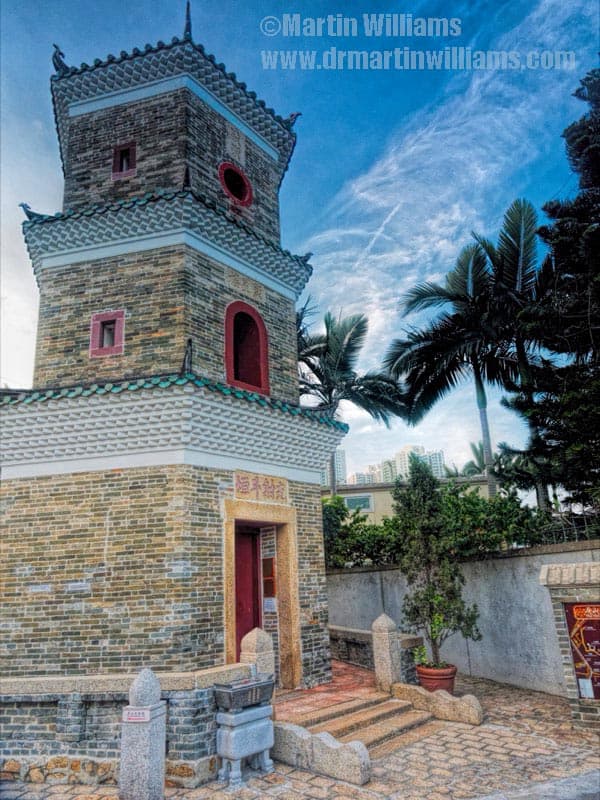
Ping Shan was reportedly established during the 12th century, by a father and son from the Tang Clan. According to the clan genealogy, the pagoda was built around 600 years ago – during the Ming Dynasty.
Ping Shan was then on low hills amidst a plain beside Deep Bay, in an area susceptible to flooding, especially by storm surges during typhoons. The pagoda was built partly to boost the fung shui and guard against floods. It was also intended as a sort of grand talisman to bring locals success in imperial examinations, so they could become officials. It still houses a statue of Fui Shing (Champion Star; or Chief Stars [of the Big Dipper]), venerated as a god of fortune for the examinations.
Though the pagoda was perhaps five or seven storeys tall, today just three storeys remain. The surroundings have been transformed, too; even the fish ponds I visited here in the late 1980s have gone, and the pagoda now faces a car park across a tarmac road, and is backed by the gigantic railway station plus high-rises. It seems a sorry fate for a building that has supposedly stood guard for so long, and at least boosted confidence for students heading for exams.
Amidst the Jumble – Echoes of Bygone Days
From the pagoda, the trail follows a narrow road, leaving the new town behind. There’s little greenery. Rice farming that helped power Ping Shan prosperity stopped decades ago, and today the area is more akin to a scruffy suburb than a proud rural settlement.
But there are sights along the heritage trail. A grey brick structure is a shrine to an Earth God, who supposedly protects villagers and maybe resides in a couple of small stones set in an altar.
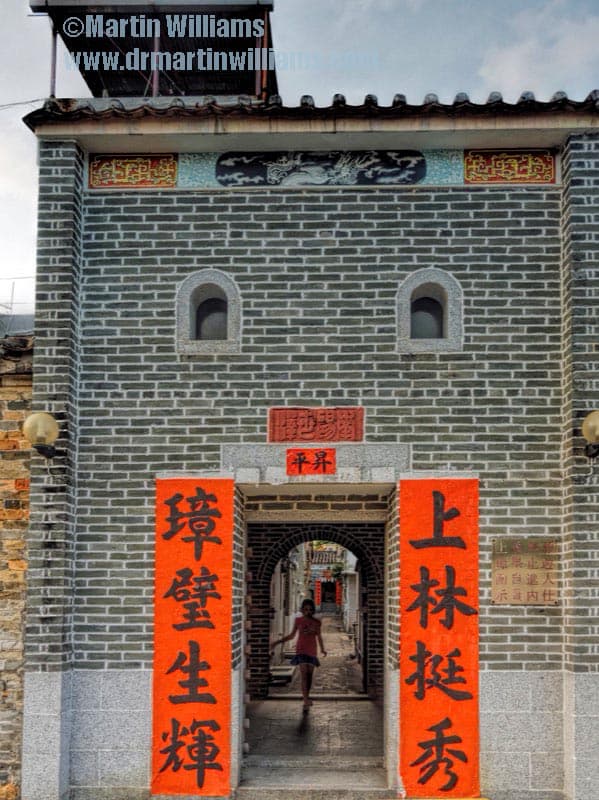
A newly renovated rectangular building with a doorway and two tiny arch shaped windows is the entrance to a walled village, Sheung Cheung Wai. It’s flanked by sturdy walls, within which houses are arrayed in tightly packed rows – showing former residents must have been willing to sacrifice living space in order to enjoy safety from banditry and inter-clan battles that afflicted the New Territories.
After a well that might be over 200 years old, a short footpath leads to Yeung Hau Temple, a simple, squat building with shrines inside, and three openings facing an open-air altar. It’s dedicated to Hau Wong, thought to have been a general who died trying to protect two boy emperors as the remnants of the Song court fled Mongol invaders and reached the Pearl River Delta in the 13th century.
Sibling Finery – Ancestral Halls
Arguably the stars of the trail are two impressive ancestral halls built side by side and with almost identical designs, like siblings.
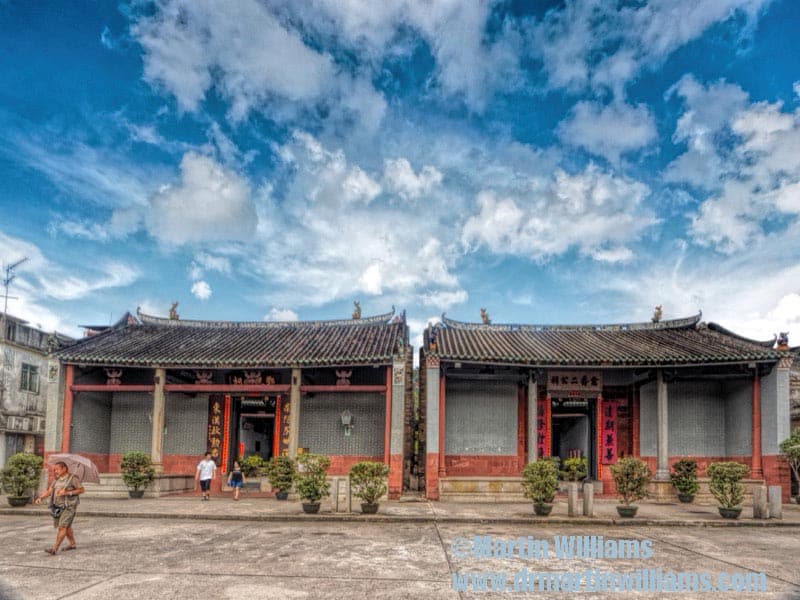
The trail arrives at an open area in front of them, with the 700-year-old Tang Ancestral Hall on the left. As well as having tablets with names of Tang Clan ancestors arrayed in a rear recess, its two spacious courtyards host festivals, ceremonies and clan meetings.
Though its neighbour is named the Yu Kiu Ancestral Hall, it too is dedicated to the Tang Clan, and was built by two brothers in the 16th century. It’s also more than simply an ancestral hall, and was a school for local children.
Both ancestral halls have traditional Chinese architecture including roof tiles topped with pottery statues of fish, unicorns and monsters, along with mighty guards painted on their doors.
Steeped in Imperial China – A School for Swots
The Ping Shan villagers were not foolish enough to think a pagoda alone was enough to help pass imperial examinations, and there are two study halls here. The best of them is barely a minute’s walk from the ancestral halls.
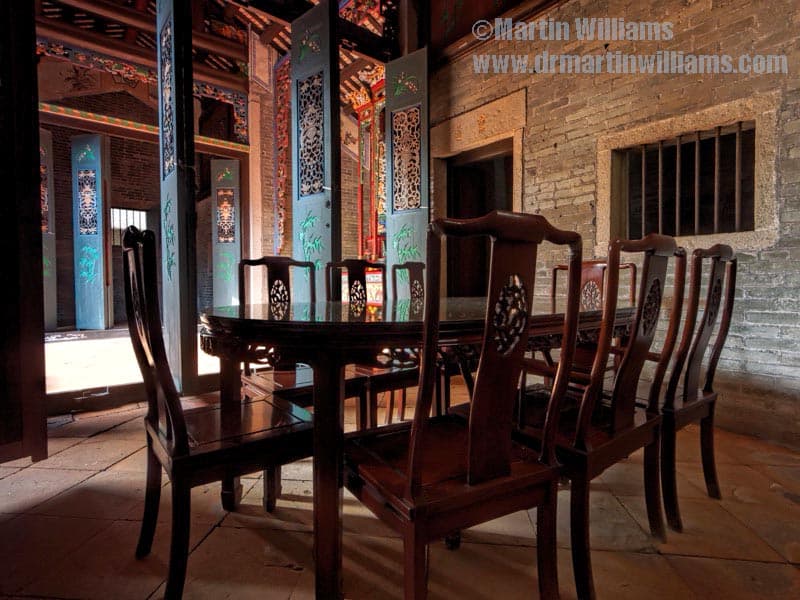
This is Kun Ting Study Hall, and while the exterior looks unprepossessing, inside there’s a small open courtyard plus alcoves with splendidly decorated beams, roofs and door panels. It’s relatively new, built in 1870 – just 29 years before the British leased the New Territories, and 35 years before China abolished the imperial examination system. Even so, it’s steeped in the traditions of imperial China.
From early last century till soon after the Second World War, local children studied here. Today, the study hall is a restored relic of the past, almost frozen in time like a museum exhibit.
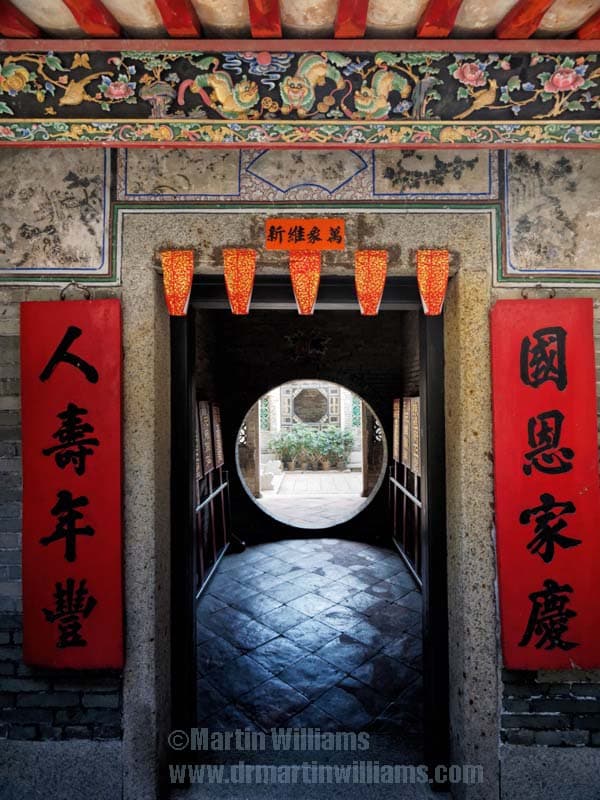
Next door, a narrow corridor leads to a circular entrance to Ching Shu Hin, a former guesthouse for scholars and visitors. Here, too, there are exquisite decorations.
Goodbye Police, Hello Gallery
In 1899, the year the lease on the New Territories began, the colonial government built a police station atop the main hill at Ping Shan. The police eventually moved out around the turn of this century, and the three buildings now house the inelegantly named Ping Shan Tan Clan Gallery cum Heritage Trail Visitors Centre.
The main building, especially, is in classic colonial style – squarely built, with open archways flanking corridors on both floors, and walls painted white. Inside the Gallery are exhibits with items from Ping Shan, including a very fine tapestry. Photos abound; some portray scenes from only a few decades ago that appear as if taken in another era.
Getting there
The pagoda is near Exit E of Tin Shui Wai Station; the Gallery is a few minutes’ walk from the Ping Shan Stop along the Light Rail Transit System.
Opening times of buildings vary; they’re typically 9am to 1pm and 2pm to 5pm, though the Gallery is open from 9apm to 6pm in summer, closing on Mondays.

 At Ping Shan, there's a cluster of venerable buildings including two of the grandest ancestral halls and the only ancient pagoda in Hong Kong.
At Ping Shan, there's a cluster of venerable buildings including two of the grandest ancestral halls and the only ancient pagoda in Hong Kong.